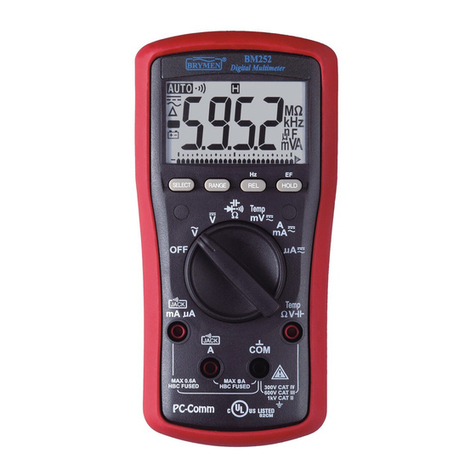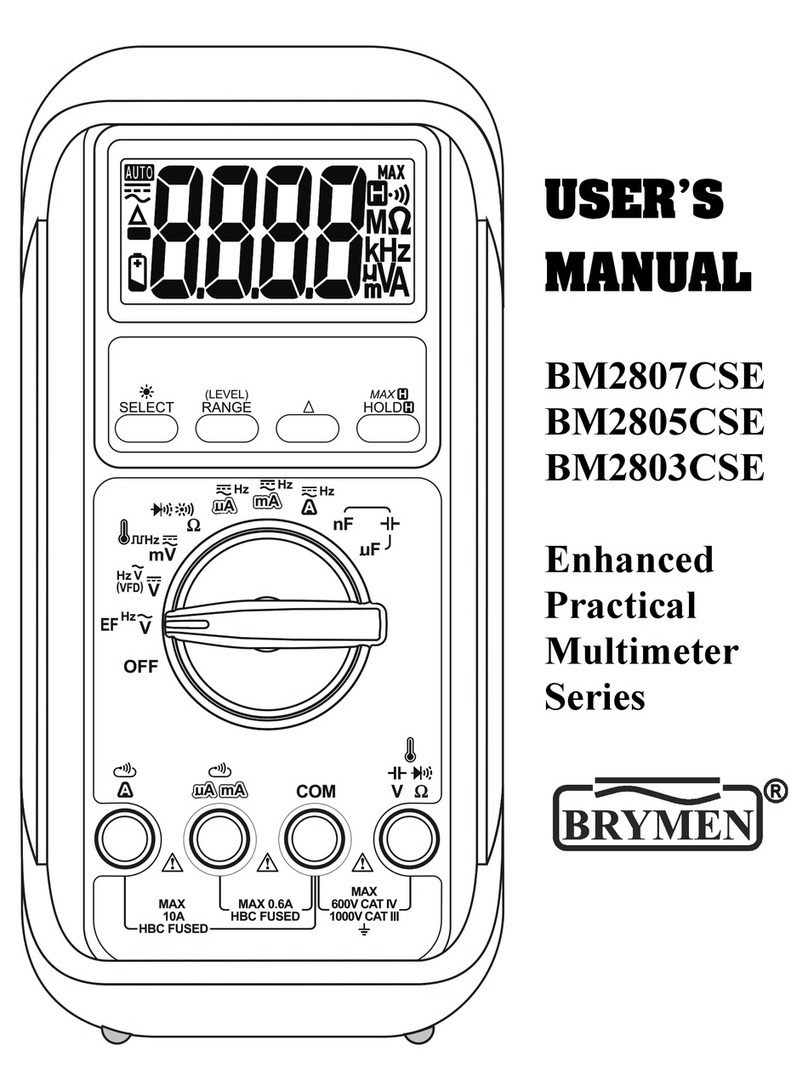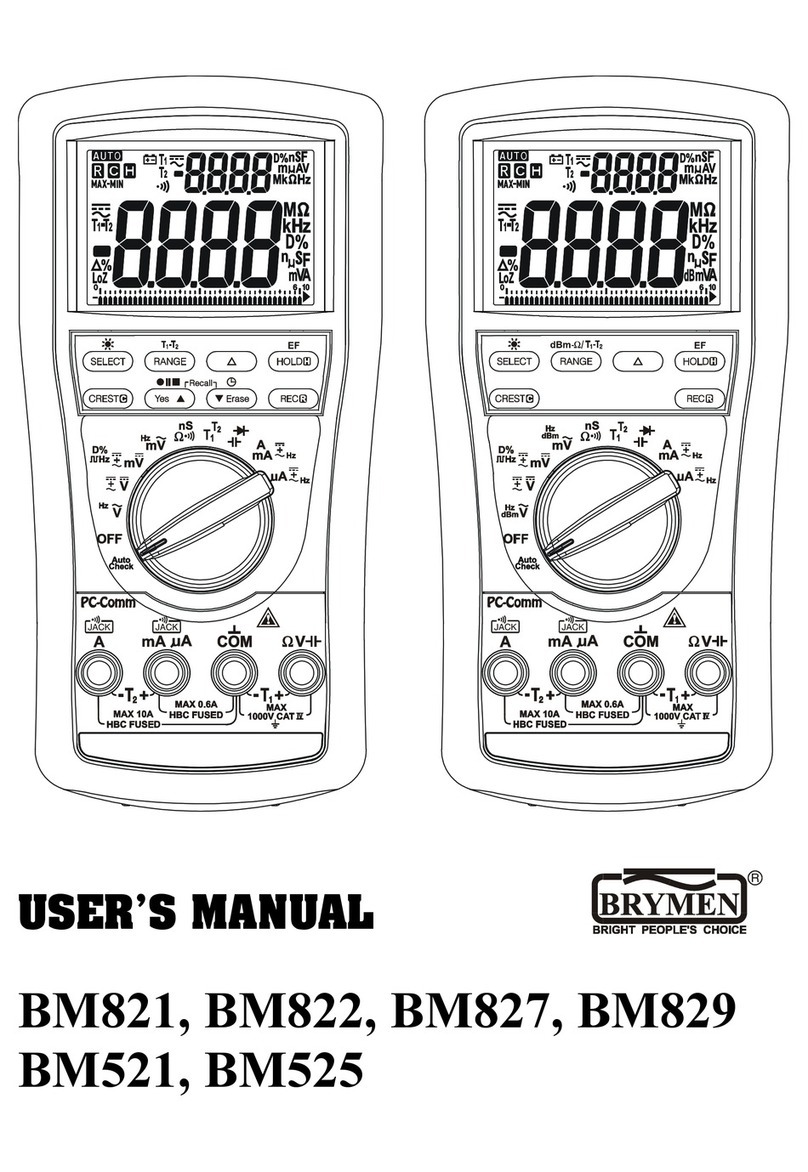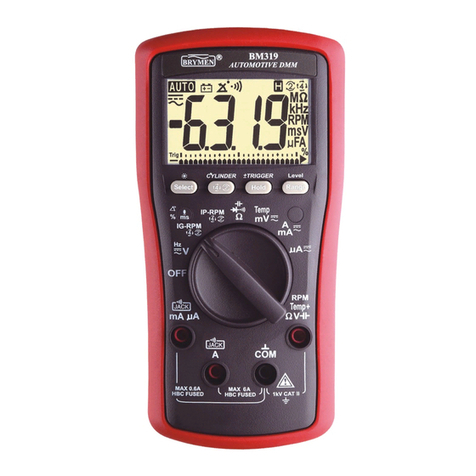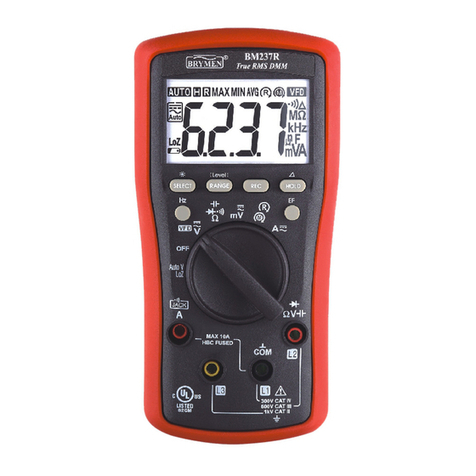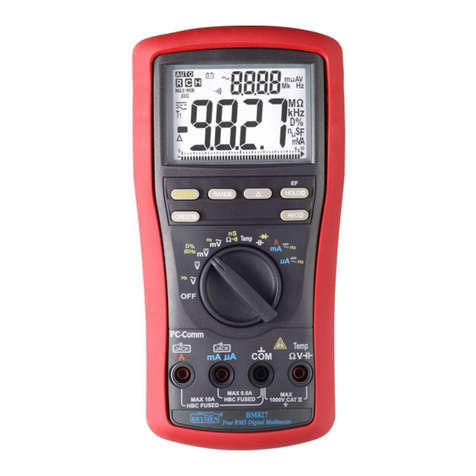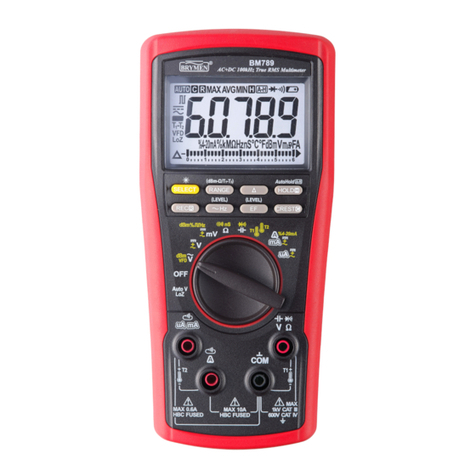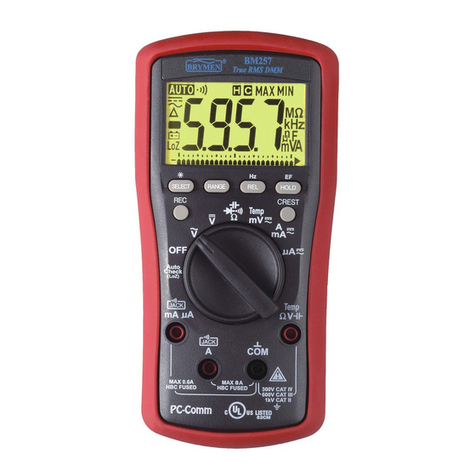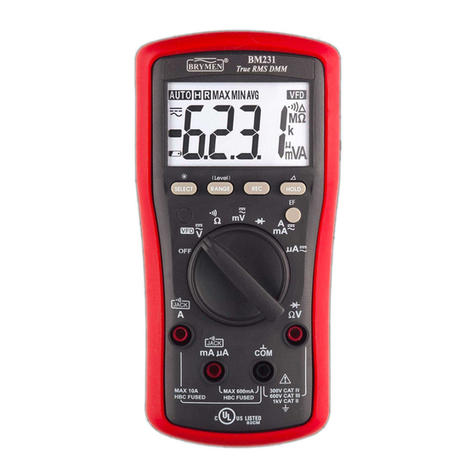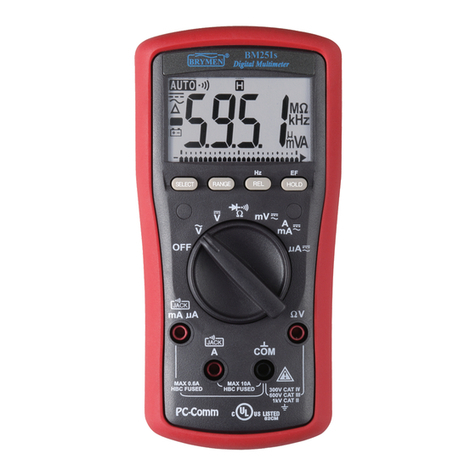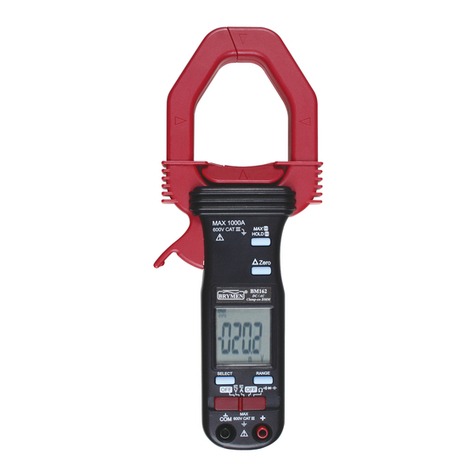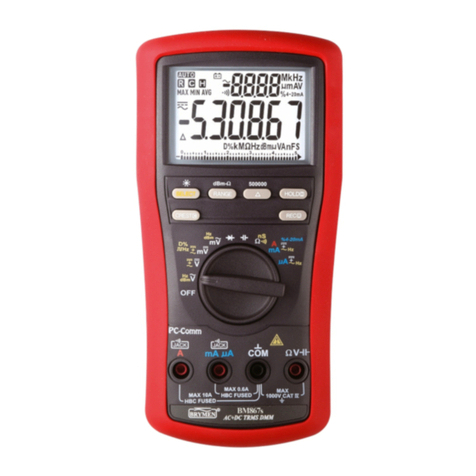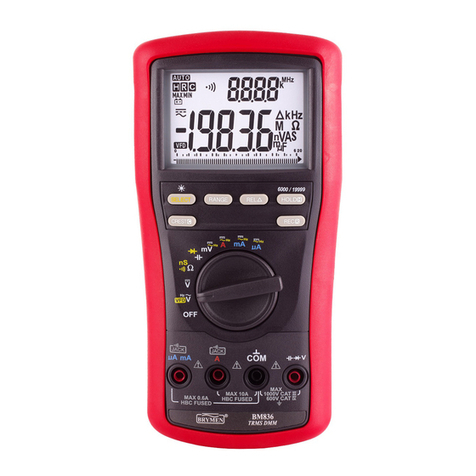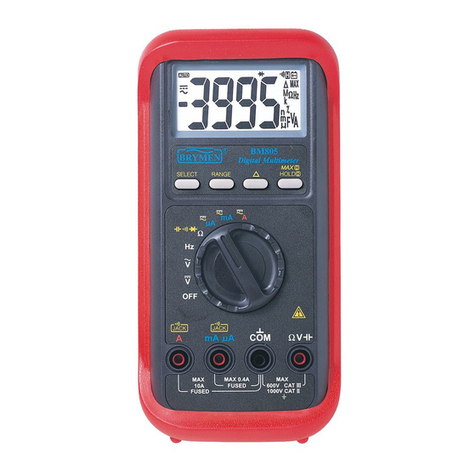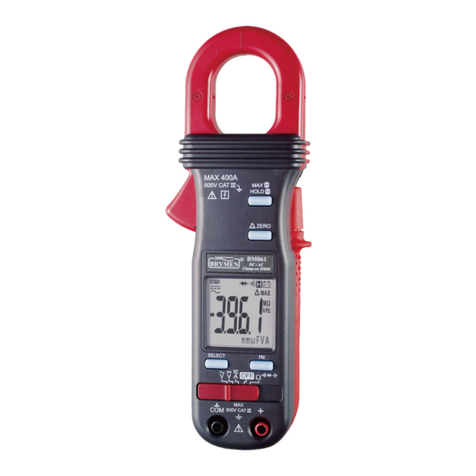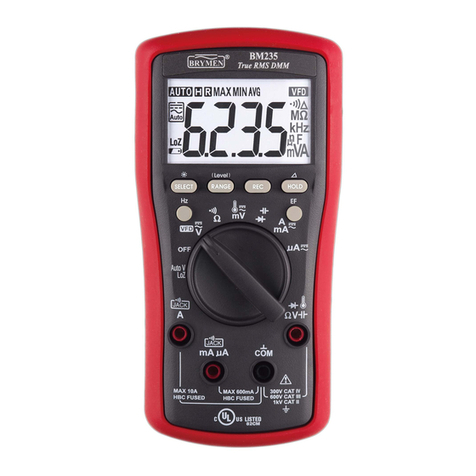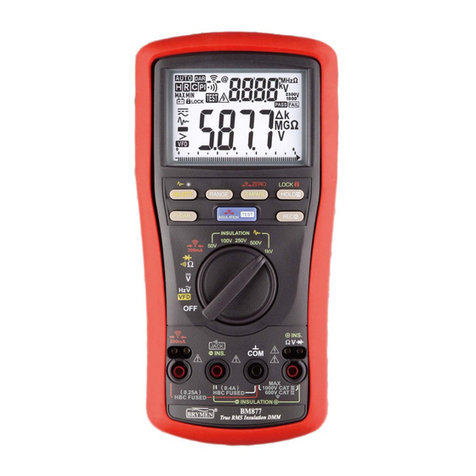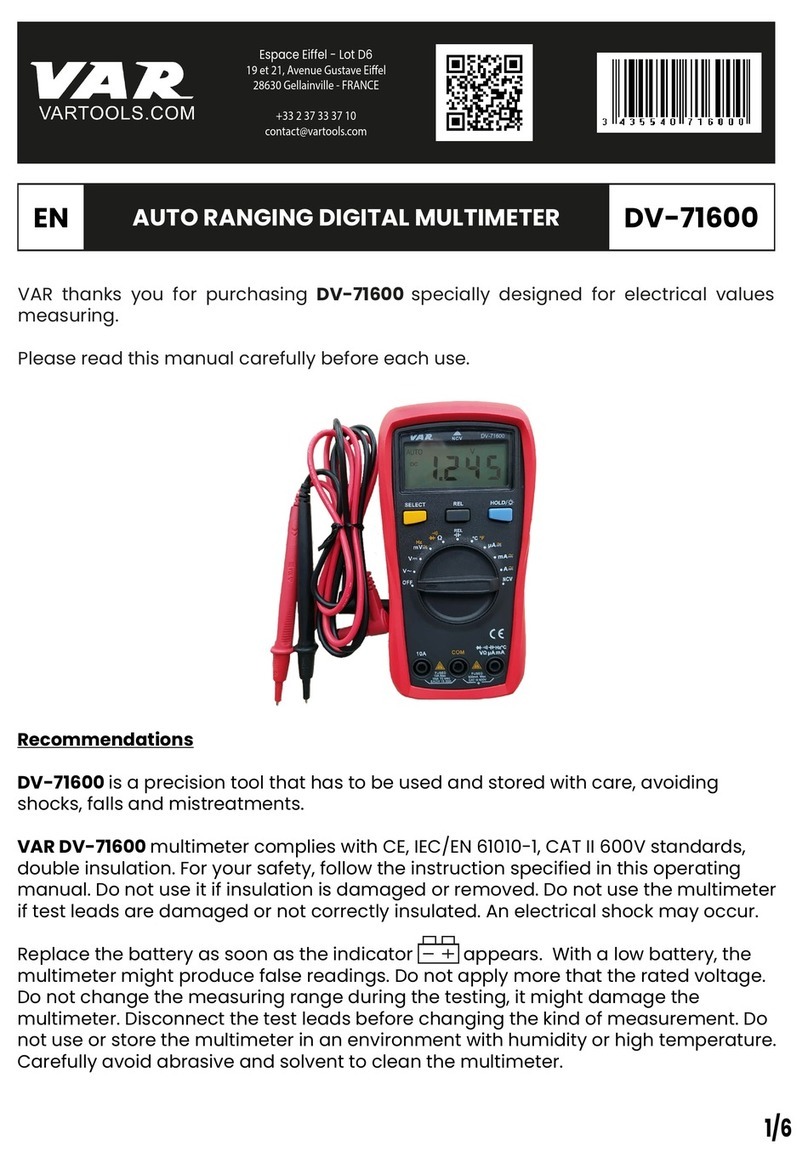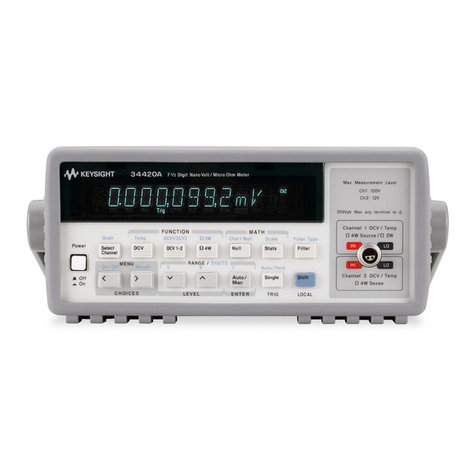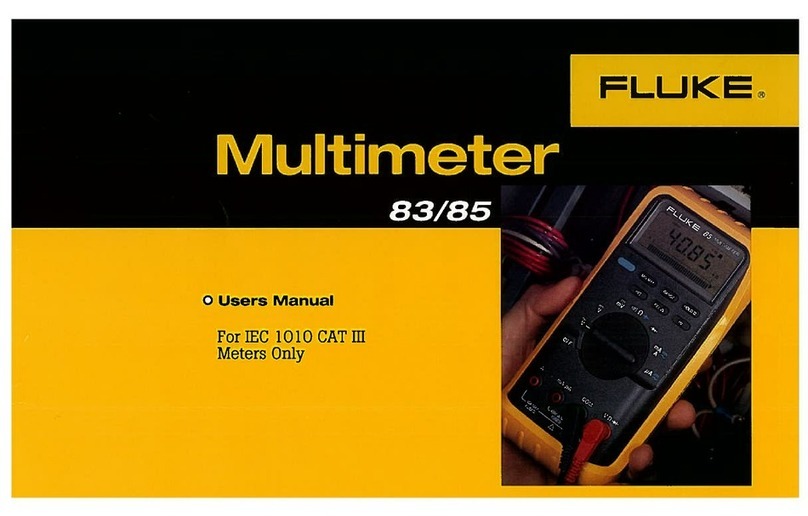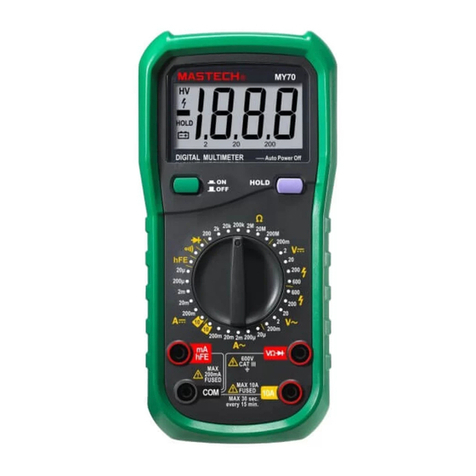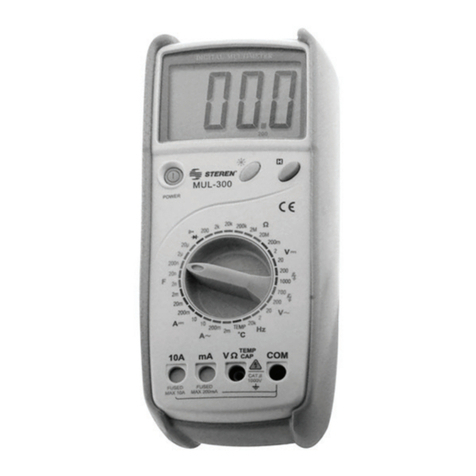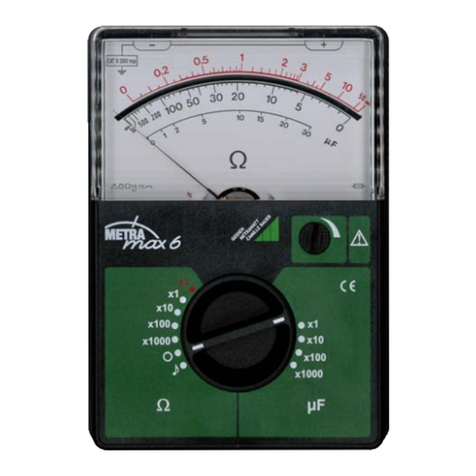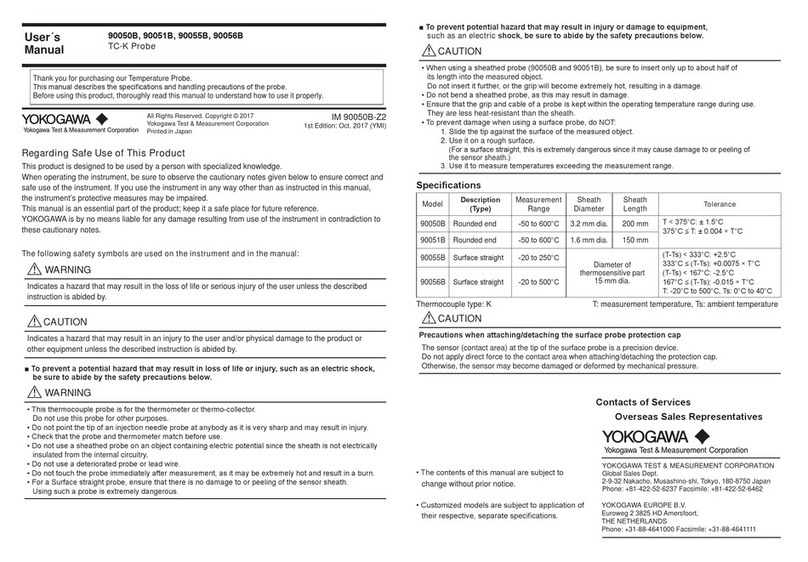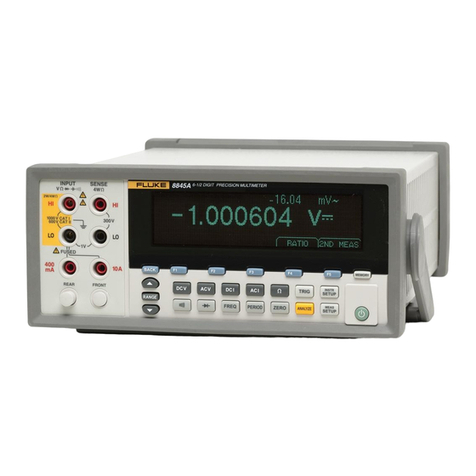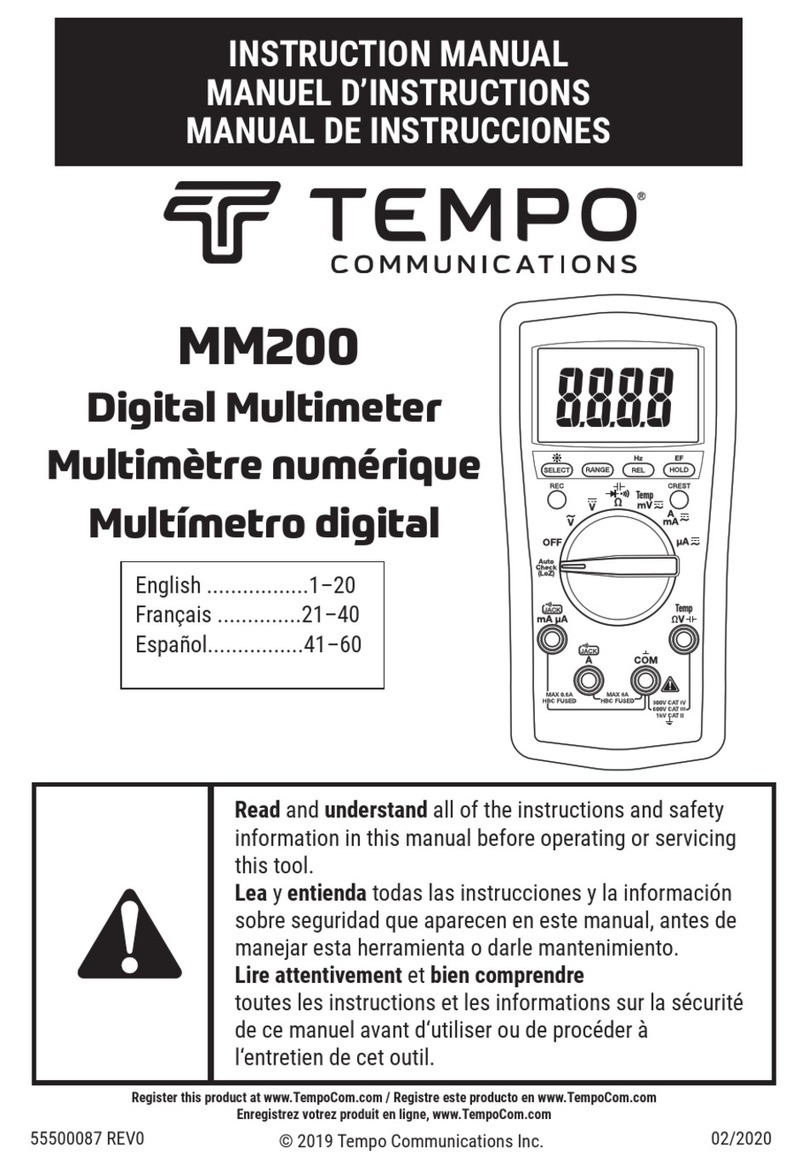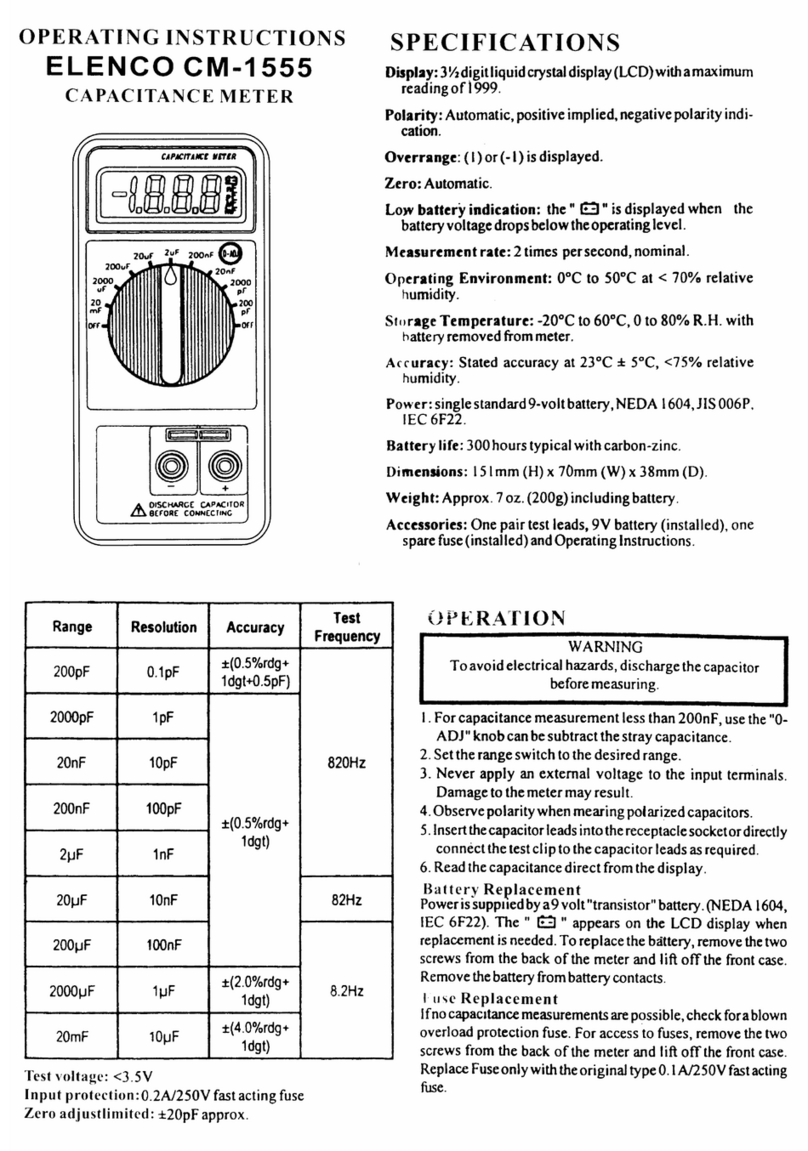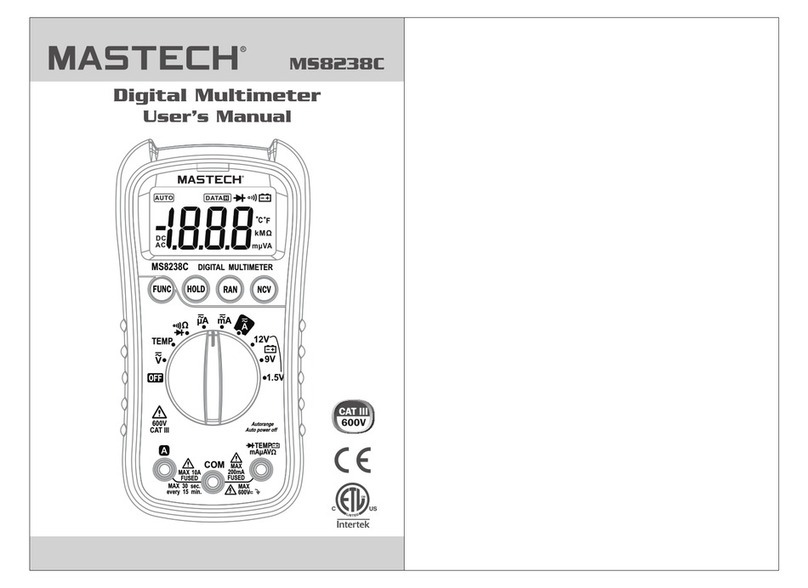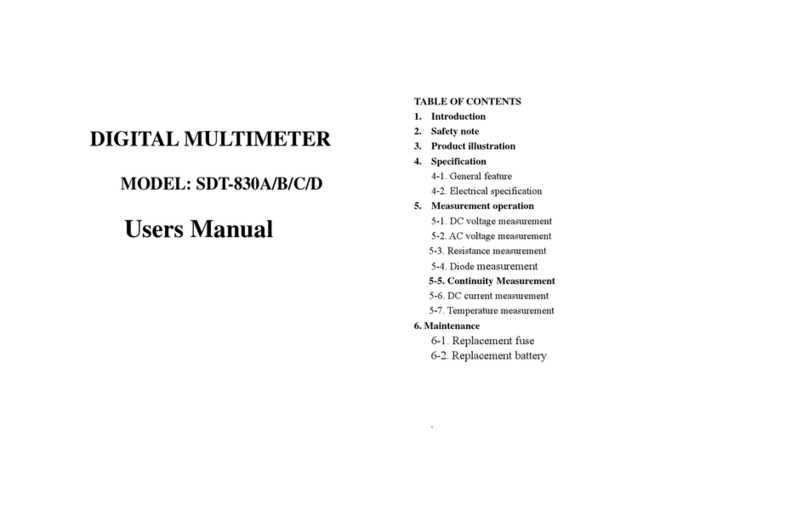1
1) SAFETY
This manual contains information and warnings that must be followed for operating the
meter safely and maintaining the meter in a safe operating condition. If the meter is
used in a manner not specified by the manufacturer, the protection provided by the
meter may be impaired.
Terms in this manual
WARNING identifies conditions and actions that could result in serious injury or even
death to the user.
CAUTION identifies conditions and actions that could cause damage or malfunction
in the instrument.
WARNING
To reduce the risk of fire or electric shock, do not expose this product to rain or
moisture. The meter is intended only for indoor use.
Observe proper safety precautions when working with voltages above 33 Vrms, 46.7
Vpeak or 70 VDC. These voltage levels pose a potential shock hazard to the user.
Before and after hazardous voltage measurements, check the voltage function on a
known source such as line voltage to determine proper meter functioning.
The meter meets UL/IEC/EN61010-1 Ed. 3.0, CAN/CSA C22.2 No. 61010-1 Ed. 3.0,
UL/IEC/EN61010-2-033 Ed. 1.0 to Measurement CAT-III 1kV and CAT-IV 600V, AC &
DC. The meter also meets the relevant Parts of EN61557. In particular, Part 1 Ed. 2.0,
Part 2 Ed. 2.0 and Part 10 Ed. 2.0. These relevant parts of EN61557 are not covered
by the ETL certification.
The accompanied test probe assembly meets UL/IEC/EN61010-031 Ed. 1.1 to the
same meter ratings or better. IEC 61010-031 requires exposed conductive test probe
tips to be ≤ 4mm for CAT III & CAT IV ratings. Refer to the category markings on your
probe assemblies as well as on the add-on accessories (like detachable Caps or
Alligator Clips), if any, for applicable rating changes.
Keep your hands/fingers behind the hand/finger barriers (of the meter and the test
probe assembly, where applicable) that indicate the limits of safe access of the hand-
held parts during measurements. Inspect lead wires, connectors, and probes for
damaged insulation or exposed metal before using the meter. If any defects are found,
replace them immediately. Only use the probe assembly provided with the meter or a

